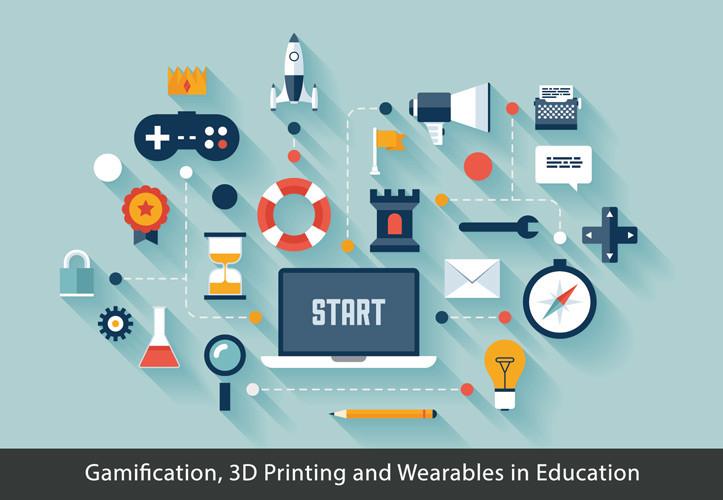Unlocking The Future of Educational Gamification: Trends, Benefits, and Predictions
The landscape of education is evolving rapidly, fueled by digital innovation and a growing understanding of student engagement. One of the most dynamic changes in this arena is educational gamification. But what exactly is gamification in education, and how is it unlocking new pathways for students and educators? This article delves into the key trends, transformative benefits, and forward-thinking predictions that define the future of educational gamification.
What is Educational Gamification?
Educational gamification refers to the process of integrating game-like elements—such as points, badges, leaderboards, and levels—into non-game contexts like classrooms, e-learning platforms, and training modules. The goal is to make learning more engaging,enjoyable,and motivating for learners of all ages. By leveraging popular game mechanics, educators can foster deeper learning, increase participation, and improve knowledge retention.
Latest Trends in Educational Gamification
As technology advances and pedagogical insights grow, several trends are shaping the future of gamification in education.Here are the most impactful:
- Adaptive Learning Platforms: Gamified platforms now use AI and data analytics to deliver personalized learning experiences, adapting challenges and content to individual student levels.
- Immersive Technologies: Augmented Reality (AR) and Virtual Reality (VR) bring gamified learning to life, offering interactive, experiential lessons that transcend traditional textbooks.
- Microlearning and mobile-First Approaches: Bite-sized, gamified lessons designed for smartphones and tablets make education accessible anytime, anywhere.
- Social Collaboration: Multiplayer game elements and team challenges are being integrated into curricula to foster collaboration and peer learning.
- Blockchain-Based rewards: digital certificates and achievements secured thru blockchain give students verifiable proof of their progress and skills.
- Focus on Emotional intelligence: Games that promote empathy, resilience, and emotional regulation are increasingly included in lesson plans to nurture well-rounded learners.
Proven Benefits of Educational Gamification
Gamifying education leads to a range of tangible benefits for learners, educators, and educational institutions. Here’s how:
- Increased Motivation: Game mechanics like rewards, badges, and progress bars tap into intrinsic and extrinsic motivators, fostering a love for learning.
- Enhanced Engagement: Interactive experiences break monotony and keep students attentive during lessons.
- Improved Retention Rates: Active participation, immediate feedback, and repetition in games contribute to better memory and understanding.
- Safe Failure and Experimentation: Gamified environments encourage risk-taking and learning from mistakes without real-world consequences.
- Personalized Pacing: Students can progress at their own speed, which is especially beneficial in diverse classrooms with varied learning styles.
- Development of 21st century Skills: Problem-solving, critical thinking, collaboration, and digital literacy are all fostered through well-designed gamified activities.
Case Studies: Gamification Success Stories
real-world applications illustrate the transformative power of educational gamification. Consider these standout examples:
Duolingo: Revolutionizing Language Learning
The popular language-learning app Duolingo employs points, streaks, and badges to motivate users. Research shows that learners who use the app consistently outperform traditional language learners in both engagement and retention.
Classcraft: Motivating classroom Communities
Classcraft transforms the classroom experience into a role-playing game where teams of students work together to achieve academic goals.Its impact is evident in increased collaboration, better classroom management, and boosted morale.
Kahoot!: Making Assessments Fun
Kahoot! leverages quiz-based challenges to make assessments interactive and enjoyable, with millions of users worldwide. Studies reveal higher test participation rates and improved quiz performance in gamified settings.
Practical Tips for Implementing Gamification in the Classroom
- Align Game Mechanics with Learning Goals: Select game features—such as leaderboards, levels, or rewards—that directly support your educational objectives.
- Provide Immediate feedback: Use instant feedback loops so learners can track their progress and adjust strategies in real-time.
- Encourage Collaboration: include team-based missions or challenges to build social skills and foster a supportive classroom community.
- Balance Competition and Cooperation: Strive for a mix that motivates every student, irrespective of their learning style or personality.
- monitor and Adjust: Regularly assess the effectiveness of gamified elements and refine them based on student feedback and performance data.
Predictions: The Future of Gamified Education
The next decade holds exciting possibilities for the continued growth of educational gamification:
- Deeper AI Integration: Elegant algorithms will create hyper-personalized learning journeys, adapting game content in real-time.
- Expansion into corporate and Adult Learning: Gamification will move beyond K-12 and higher education,becoming essential in workplace training and lifelong learning initiatives.
- Holistic Well-Being Tracking: Future platforms will monitor not only academic outcomes but also social, emotional, and physical well-being through game-based metrics.
- Global Learning Communities: Cross-border gamified programs will connect diverse learners, fostering collaboration and cultural understanding on a global scale.
- Worldwide Accessibility: As inclusivity becomes a priority, gamification tools will be designed for learners with disabilities, ensuring everyone can benefit from engaging educational experiences.
First-Hand Insights: Educator and Student perspectives
Educators report that introducing gamified elements not only makes lessons more enjoyable but also promotes active participation and autonomous learning. Students describe gamification as making complex subjects feel accessible and motivating them to push through academic challenges.
“Introducing gamification strategies in my classroom has been transformative. Engagement and collaboration have soared, and students take more ownership of their learning journey than ever before.”
— Jennifer Mendoza, Middle school Science Teacher
Conclusion: Embracing the Future of Educational Gamification
Educational gamification has emerged as a pivotal force in modern learning, blending fun with function to make education more effective and enjoyable. From interactive technologies and personalized learning pathways to collaborative challenges and real-world rewards, the future looks bright for students, teachers, and lifelong learners who embrace game-based learning. By adopting the latest trends and integrating best practices, educators can unlock unparalleled potential in every learner—paving the way for an engaging and inclusive educational future.
Ready to revolutionize your classroom or e-learning platform? Explore more about gamified learning solutions and start your journey into the future of education today!

